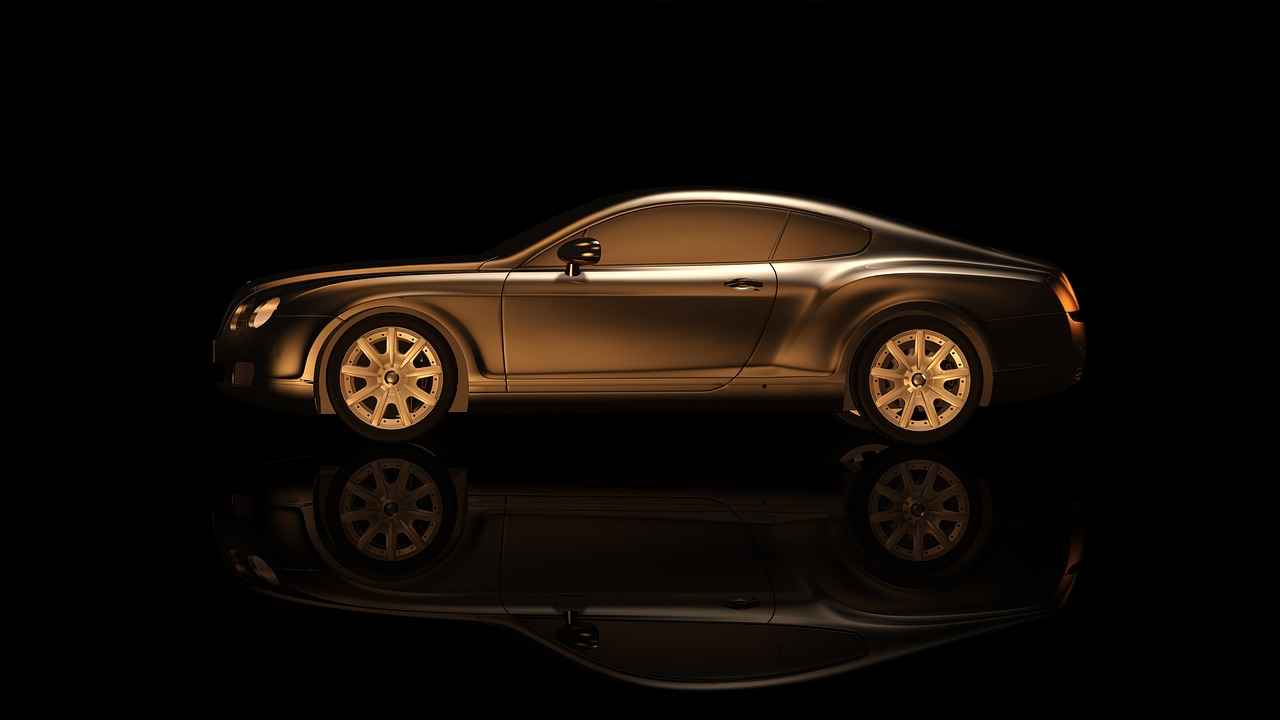This article explores the benefits and drawbacks of selecting a white Honda Civic, providing insights into aesthetics, maintenance, resale value, and more to help you make an informed decision.
Choosing a white Honda Civic is a decision that many car buyers consider due to its timeless appeal and versatility. White is often associated with modernity and cleanliness, making it a popular choice among consumers. This section will delve into the various reasons why a white Honda Civic might be the perfect fit for you.
- Versatility: The white color complements various styles, making it suitable for both casual and formal settings.
- Modern Look: White vehicles offer a sleek and contemporary appearance that stands out on the road.
- Enhanced Visibility: White cars are more visible in low-light conditions, contributing to safety.
The visual advantages of white cars, particularly the Honda Civic, are notable. The color enhances the vehicle’s design, making it appear more elegant and sophisticated. White reflects light, which not only contributes to a cooler interior during hot weather but also enhances the overall aesthetic.
White is often regarded as a timeless choice for vehicles. Its neutrality appeals to a wide range of consumers, making it a safe and popular option.
White is associated with purity and simplicity, influencing buyer perceptions and brand image positively in the automotive market.
While a white Honda Civic offers many aesthetic benefits, it does require specific maintenance considerations. Dirt and scratches can be more visible, necessitating regular cleaning to keep it looking pristine.
- Use a gentle soap designed for cars to avoid damaging the paint.
- Regularly wax your vehicle to protect the paint and enhance shine.
- Consider using a clay bar to remove embedded dirt and contaminants.
Addressing minor scratches and dents promptly is essential. Touch-up paint can be an effective solution for small imperfections, while professional services are available for more significant damage.
When it comes to resale value, white Honda Civics often perform well compared to other colors. The demand for white vehicles remains high, which can positively impact your investment.
Color significantly influences a vehicle’s resale value. White cars generally maintain their value better in the used car market, making them a wise choice for resale.
There is a consistent market demand for white vehicles, particularly for popular models like the Honda Civic. This demand can enhance your potential return when it comes time to sell.

Why Choose a White Honda Civic?
The white Honda Civic stands out as a favorite among car buyers for various reasons. Its modern and sleek design, coupled with its versatility, makes it an appealing choice for many. This section explores the key factors that contribute to the popularity of the white Honda Civic, highlighting its aesthetic charm and practical benefits.
- Modern Look: The white color of the Honda Civic enhances its contemporary design, giving it a fresh and clean appearance. This color choice allows the vehicle to reflect light beautifully, accentuating its curves and lines, making it visually striking on the road.
- Versatility: A white Honda Civic seamlessly fits into various lifestyles and preferences. Whether you are a young professional, a family person, or a student, this vehicle complements a range of personal styles. Its neutral tone allows for easy customization with accessories or decals, catering to individual tastes.
- Popular Choice: The appeal of a white Honda Civic is further reinforced by its status as a popular choice among car buyers. Many people associate white cars with cleanliness and elegance, making them a sought-after option in the automotive market.
- Safety and Visibility: White cars are often more visible on the road, which can enhance safety. This aspect is particularly appealing to parents and safety-conscious drivers, as it may reduce the likelihood of accidents.
- Resale Value: White vehicles tend to maintain a strong resale value compared to other colors. The enduring popularity of white in the market means that a white Honda Civic is likely to attract more buyers when it comes time to sell.
Overall, the combination of aesthetic appeal, versatility, and practical benefits makes the white Honda Civic a standout choice for a wide range of consumers. Its ability to adapt to various lifestyles while maintaining a modern look ensures it remains a favorite in the automotive world.

The Aesthetic Appeal of White Cars
The choice of color for a car can significantly influence its overall aesthetic and appeal. Among the various options available, white stands out as a classic and sophisticated choice, especially for models like the Honda Civic. This article delves into the visual advantages of white cars, highlighting how this color enhances the design of the Honda Civic, making it a striking presence on the road while exuding a sense of timeless elegance.
White Cars: A Modern Classic
White cars, particularly the Honda Civic, are often associated with a modern and clean aesthetic. The sleek lines of the Civic are beautifully accentuated by the crispness of white, allowing the vehicle to appear both contemporary and sophisticated. This color creates a visual clarity that draws attention, making the Civic a standout choice for those who want a car that looks fresh and inviting.
The Role of White in Vehicle Design
White serves as an excellent backdrop for the Honda Civic’s design features. The contrast between the white exterior and the vehicle’s chrome accents or colored trims enhances the overall look, making details pop. The simplicity of white also allows it to blend seamlessly into various environments, from urban settings to scenic landscapes, ensuring the Civic looks good anywhere.
Reflecting Light and Enhancing Comfort
One of the practical benefits of white cars is their ability to reflect sunlight effectively. This characteristic helps keep the interior cooler during hot weather, contributing to a more comfortable driving experience. As a result, owners may find themselves relying less on air conditioning, enhancing fuel efficiency and reducing environmental impact.
Psychological Appeal of White
The color white is often linked to feelings of purity, simplicity, and peace. These psychological associations can positively influence buyer decisions, making white vehicles attractive options. The Honda Civic, with its clean lines and modern design, embodies these qualities, appealing to a broad range of consumers who appreciate a minimalistic yet stylish aesthetic.
In summary, the aesthetic appeal of white cars, particularly the Honda Civic, lies in their ability to combine modern elegance with practical advantages. This color not only enhances the vehicle’s design but also contributes to a more comfortable and enjoyable driving experience.
White as a Timeless Color
When it comes to choosing a vehicle, the color can significantly influence a buyer’s decision. White has emerged as a timeless color choice for cars, particularly for models like the Honda Civic. This enduring popularity stems from a variety of factors that resonate with a diverse range of consumers.
One of the most compelling reasons for selecting white is its versatility. White vehicles can seamlessly fit into various environments, whether it’s a bustling urban setting or a serene suburban neighborhood. They exude a sense of modernity and elegance, making them suitable for both formal and casual occasions. This adaptability appeals to a wide spectrum of car buyers, from young professionals to families.
Moreover, white cars are known for their visual appeal. The clean and crisp look of a white Honda Civic enhances its design, allowing it to stand out on the road while maintaining a classic aesthetic. This color reflects light effectively, which not only contributes to a cooler interior during hot weather but also helps reduce the need for air conditioning, promoting energy efficiency.
Another aspect to consider is the psychological impact of the color white. Often associated with purity and simplicity, this color can create a positive perception in the minds of consumers. This association can influence brand image and buyer decisions, making white a favorable choice in the automotive market.
In terms of market trends, white continues to dominate car color preferences. Its enduring popularity is driven by factors such as resale value and buyer demand. White vehicles tend to retain their value better compared to other colors, making them a smart investment for prospective buyers.
Overall, the appeal of white as a timeless color choice for vehicles lies in its versatility, aesthetic advantages, and psychological associations. Whether you’re looking for a car that complements your lifestyle or one that holds its value over time, a white Honda Civic is a compelling option.
How White Reflects Light
When considering the benefits of a white Honda Civic, one significant advantage lies in how the color white interacts with sunlight. White cars, including the Honda Civic, are known for their ability to reflect sunlight effectively. This characteristic plays a crucial role in maintaining a cooler interior during hot weather.
Unlike darker colors that absorb heat, white surfaces reflect a substantial amount of sunlight, which helps keep the cabin temperature lower. This natural cooling effect can lead to a more comfortable driving experience, especially in regions with high temperatures. As a result, drivers may find themselves relying less on air conditioning, which not only enhances comfort but also improves fuel efficiency.
Moreover, the reduced need for air conditioning can contribute to lower energy consumption. This is particularly beneficial for those who are environmentally conscious or looking to save on fuel costs. By choosing a white Honda Civic, owners can enjoy a vehicle that not only looks stylish but also promotes a more sustainable driving experience.
In addition to the practical benefits, the aesthetic appeal of a white car cannot be overlooked. White is often associated with purity and elegance, making it a timeless choice for many consumers. The sleek appearance of a white Honda Civic enhances its overall design, allowing it to stand out on the road while maintaining a classic look.
In summary, selecting a white Honda Civic offers numerous advantages, particularly in terms of temperature control and energy efficiency. The ability of white to reflect sunlight contributes to a cooler interior, reducing the reliance on air conditioning and enhancing the overall driving experience. This makes the white Honda Civic not just a stylish choice, but also a practical one.
Psychological Effects of White
The color white is often associated with purity, innocence, and simplicity. These psychological associations play a significant role in consumer behavior, particularly in the automotive market. When potential buyers see a white car, such as the Honda Civic, they may subconsciously link it to these positive attributes, influencing their purchasing decisions.
In the context of automobiles, the perception of white as a clean and modern color can enhance a brand’s image. Car manufacturers often utilize this color to convey a sense of reliability and freshness. For instance, a white Honda Civic can project an image of sophistication while appealing to a broad range of consumers, from young professionals to families.
Moreover, the simplicity of white can evoke feelings of calmness and serenity. This emotional response can be particularly influential during the purchasing process, as buyers often seek a vehicle that reflects their personality and lifestyle. The Honda Civic, known for its practicality and efficiency, paired with the color white, reinforces the notion of smart decision-making and value.
Additionally, white cars tend to stand out in various environments, making them easier to spot in parking lots or on the road. This visibility can provide a sense of security for drivers, as they are less likely to be overlooked by other motorists. As a result, many consumers are drawn to white vehicles, perceiving them as safer options.
In summary, the psychological effects of white extend beyond mere aesthetics in the automotive market. The associations of purity, simplicity, and modernity contribute significantly to buyer decisions and brand image. Understanding these perceptions can empower consumers to make informed choices that align with their values and preferences.
Trends in Car Color Preferences
In recent years, car color preferences have shifted dramatically, with white vehicles emerging as a dominant choice among consumers. This trend reflects not only aesthetic appeal but also practical considerations that resonate with modern buyers.
Popularity of White Vehicles
White has consistently topped the charts as one of the most popular car colors globally. According to industry reports, nearly 35% of new cars sold are white, making it a favorite among diverse demographics. This preference can be attributed to several factors:
- Versatility: White vehicles are versatile and can complement a variety of styles, making them suitable for both luxury and everyday use.
- Visibility: White cars are more visible on the road, enhancing safety and reducing the risk of accidents.
- Heat Reflection: White reflects sunlight, keeping the interior cooler during hot weather, which is a significant advantage in warmer climates.
Factors Driving the Trend
Several factors contribute to the increasing popularity of white cars:
- Modern Aesthetics: The sleek and clean look of white vehicles aligns with contemporary design trends, appealing to younger buyers.
- Psychological Appeal: White is often associated with purity and simplicity, which can positively influence consumer perception and brand image.
- Resale Value: White cars tend to retain their value better than other colors, making them a wise investment for buyers concerned about depreciation.
Current Trends in Automotive Design
As manufacturers continue to innovate, the demand for white vehicles remains strong. The color is often featured prominently in marketing campaigns, reinforcing its status as a leading choice. Additionally, many automakers are now offering various shades of white, such as pearl and off-white, to cater to evolving consumer tastes.
In conclusion, the trend towards white vehicles is driven by a combination of aesthetic appeal, practical benefits, and psychological factors. As consumers increasingly prioritize these elements, it seems that the popularity of white cars will continue to thrive in the automotive market.

Maintenance Considerations for White Cars
Maintaining a white Honda Civic requires a thoughtful approach to ensure its exterior remains pristine and visually appealing. The color white is known for its ability to showcase dirt, grime, and scratches more prominently than darker shades. Therefore, understanding the maintenance requirements is essential for keeping your vehicle in top condition.
- Cleaning Frequency: Regular cleaning is crucial. It is recommended to wash your white Honda Civic at least once every two weeks. In areas with heavy pollution or during rainy seasons, more frequent washes may be necessary to prevent buildup.
- Visibility of Dirt and Scratches: White paint tends to reveal imperfections more than other colors. Even minor scratches can be noticeable, making it important to inspect your vehicle regularly. Addressing these issues promptly can prevent further damage and maintain the car’s aesthetic.
- Cleaning Techniques: Use a gentle car wash soap and microfiber cloths to avoid scratching the surface. A two-bucket method—one for soapy water and one for rinsing—can help minimize swirl marks and preserve the paint quality.
Additionally, applying a coat of wax every few months can provide an extra layer of protection against dirt and UV rays, enhancing the longevity of the paint. For those stubborn stains, consider using a clay bar treatment to remove embedded contaminants without damaging the finish.
To keep your white Honda Civic looking its best, consider investing in protective coatings or sealants that can help maintain the shine and reduce the frequency of washes. Regularly detailing the car, including polishing and waxing, can also significantly improve its appearance.
In summary, maintaining a white Honda Civic involves regular cleaning, prompt attention to scratches, and protective measures to keep the exterior looking new. By following these guidelines, you can ensure that your vehicle remains a standout on the road.
Cleaning Tips for White Cars
Keeping your white Honda Civic looking pristine requires regular care and attention. This color, while stunning, can be prone to showing dirt, grime, and discoloration over time. Here are some practical tips to effectively clean and maintain your vehicle, ensuring it retains its fresh appearance.
- Regular Washing: Aim to wash your car at least every two weeks. This frequency helps prevent dirt buildup and minimizes the risk of paint damage.
- Use the Right Products: Opt for a pH-balanced car wash soap specifically designed for automotive finishes. Avoid household cleaners, as they can strip wax and damage the paint.
- Two-Bucket Method: Implement the two-bucket washing technique—one for soapy water and another for rinsing your wash mitt. This method helps avoid scratching the surface with dirt particles.
- Drying Techniques: After washing, use a soft microfiber towel to dry your car. This prevents water spots and streaks, which can be more visible on white surfaces.
- Waxing: Wax your Honda Civic every three months. A good coat of wax not only enhances shine but also provides a protective barrier against UV rays and environmental contaminants.
- Addressing Stains Promptly: For any stubborn stains, such as bird droppings or tree sap, clean them off as soon as possible. Use a dedicated car detailing spray and a soft cloth to avoid damaging the paint.
- Interior Care: Don’t forget the interior! Use a gentle cleaner for the upholstery and dashboard to keep everything looking fresh and new.
- Professional Detailing: Consider scheduling a professional detailing service at least once a year. They can provide a deep clean and restore the vehicle’s appearance effectively.
By following these tips, you can maintain the beauty of your white Honda Civic and prevent yellowing and discoloration, ensuring it remains a head-turner for years to come.
Dealing with Scratches and Dents
When it comes to maintaining the aesthetic appeal of your white Honda Civic, addressing minor scratches and dents promptly is essential. These blemishes can detract from the car’s overall appearance, and knowing how to effectively manage them can keep your vehicle looking its best.
White cars, while stunning, tend to show scratches and dents more prominently than darker colors. This is due to the contrast between the white paint and the damage. Therefore, it’s important to tackle these issues quickly to prevent further deterioration.
One of the most effective methods for addressing minor scratches is using touch-up paint. Here are some steps to consider:
- Identify the Paint Code: Check your vehicle’s manual or the door jamb for the specific paint code to ensure you purchase the correct shade.
- Clean the Area: Thoroughly clean the scratched area with soap and water, then dry it completely.
- Apply Touch-Up Paint: Use a small brush or pen applicator to carefully fill in the scratch. Allow it to dry as per the manufacturer’s instructions.
- Buff the Surface: Once dry, gently buff the area with a soft cloth to blend the repair with the surrounding paint.
If the damage is more significant, seeking professional help may be the best option. Professional repair services can:
- Assess the Damage: Experts can evaluate the extent of the scratches or dents and recommend the best course of action.
- Use Advanced Techniques: Techniques such as paintless dent repair (PDR) can effectively remove dents without affecting the original paint.
- Ensure Quality Finish: Professionals guarantee a seamless finish that maintains the vehicle’s value and appearance.
To minimize the chances of scratches and dents, regular maintenance is crucial. Consider the following tips:
- Wash and Wax Regularly: Keeping your car clean and protected with wax can help prevent surface damage.
- Park Wisely: Avoid crowded areas and tight spaces where door dings are more likely to occur.
- Use Car Covers: When parking outdoors, using a car cover can shield your vehicle from environmental hazards.
By being proactive in dealing with scratches and dents, you can maintain the pristine look of your white Honda Civic and enhance its longevity.

Resale Value of a White Honda Civic
The resale value of a white Honda Civic is an important consideration for potential buyers and current owners alike. Understanding how color influences market demand, buyer preferences, and depreciation can significantly impact your investment.
Color plays a crucial role in the resale value of vehicles. Studies have shown that white cars tend to hold their value better than many other colors. This is primarily due to their popularity and broad appeal. Buyers often prefer white for its classic look and ease of maintenance, making it a sought-after choice in the used car market.
The market demand for white vehicles, especially the Honda Civic, remains strong. According to recent automotive market analyses, white is consistently ranked among the top colors for car purchases. This demand can lead to a higher resale value, as potential buyers may be willing to pay a premium for a well-maintained white Civic.
- Versatility: White cars are often seen as versatile, appealing to a wide range of consumers from families to young professionals.
- Perceived Safety: Many buyers associate white vehicles with safety, as they are more visible on the road.
- Resale Trends: The resale market often favors colors that remain timeless, with white consistently leading the pack.
While all vehicles depreciate, the rate can vary significantly based on color. White Honda Civics typically experience slower depreciation compared to darker or less popular colors. This can be attributed to the lasting appeal and demand for white vehicles, making them a wise choice for resale.
In summary, the resale value of a white Honda Civic is positively influenced by market demand, buyer preferences, and the color’s impact on depreciation. For those considering a Honda Civic, opting for white may not only enhance aesthetic appeal but also serve as a smart financial decision.
The Impact of Color on Resale Value
The color of a vehicle can significantly influence its resale value, and this is particularly true in the used car market. Among the various colors available, white cars consistently perform well, often leading to higher resale prices compared to other popular colors. This phenomenon can be attributed to several factors, including consumer preferences, market trends, and the practical benefits of owning a white vehicle.
Market Preferences and Trends
White has emerged as one of the most sought-after colors in the automotive industry. According to various studies, it accounts for a substantial percentage of new car sales. The appeal of white lies in its versatility and timelessness, making it a favorite among a diverse range of buyers. Its popularity is not just a fleeting trend but rather a consistent preference that influences resale values positively.
Perception and Demand
White cars are often perceived as clean, modern, and elegant. This perception can enhance buyer interest when it comes time to sell. A vehicle that is in a popular color like white is less likely to sit on the market for extended periods, which can lead to better offers. In contrast, less popular colors may result in longer selling times and lower resale values due to limited buyer interest.
Practical Considerations
Beyond aesthetics, white vehicles offer practical benefits that can enhance their appeal. They tend to reflect sunlight, keeping the interior cooler, which is especially advantageous in warmer climates. Additionally, white cars are easier to maintain in terms of visibility of dirt and scratches, which can contribute to a better overall appearance at the time of sale.
Resale Value Insights
Research has shown that white vehicles often retain their value better than cars of other colors. For instance, a white Honda Civic may command a higher resale price compared to its counterparts in darker shades. This trend is supported by data indicating that white cars generally depreciate at a slower rate, making them a wise investment for buyers concerned about long-term value.
In summary, the color of a vehicle, particularly white, plays a crucial role in determining its resale value. The combination of consumer preferences, market trends, and practical benefits all contribute to the strong performance of white cars in the used car market.
Market Demand for White Vehicles
The automotive market has witnessed a significant shift in consumer preferences, with white vehicles gaining immense popularity. Among these, the Honda Civic stands out as a top choice for many buyers. This article delves into the current market demand for white vehicles, particularly focusing on the Honda Civic, and explores how this demand can influence your investment and potential returns when it comes time to sell.
In recent years, the demand for white Honda Civics has surged, driven by several factors. Firstly, the color white is often associated with cleanliness and modernity, appealing to a wide demographic. Additionally, white vehicles tend to have lower insurance rates and are perceived as safer due to their visibility on the road. This combination of aesthetic appeal and practical benefits makes the white Honda Civic a compelling choice for many consumers.
When considering the purchase of a white Honda Civic, it is crucial to understand how current market demand can affect your investment. A vehicle that is in high demand typically retains its value better over time. This means that when it comes time to sell, you may find that your white Honda Civic has a higher resale value compared to cars in less popular colors. This is particularly relevant in the used car market, where buyers often gravitate towards colors that are currently trending.
Investing in a white Honda Civic not only meets aesthetic preferences but also aligns with financial considerations. As the demand for white vehicles continues to grow, sellers can expect a more favorable return on their investment. Studies have shown that vehicles in popular colors, especially white, tend to sell faster and at higher prices. This trend highlights the importance of color choice in vehicle resale value.
In essence, the current market demand for white vehicles, particularly the Honda Civic, presents a unique opportunity for car buyers. By understanding the implications of this demand, you can make informed decisions that enhance both your driving experience and financial investment.
Frequently Asked Questions
- What are the main benefits of choosing a white Honda Civic?
A white Honda Civic offers a sleek and modern appearance that appeals to many buyers. Its versatility allows it to complement various styles, making it a popular choice. Additionally, white cars tend to reflect sunlight, keeping the interior cooler during hot weather, which can enhance comfort and reduce air conditioning use.
- How often do I need to clean my white Honda Civic?
White cars can show dirt and scratches more easily than darker colors, so it’s best to clean your Honda Civic regularly. Aim for a wash every two weeks, or more frequently if you notice dirt buildup. This will help maintain its pristine look and prevent yellowing over time.
- Does the color of my Honda Civic affect its resale value?
Yes, the color of your vehicle can significantly impact its resale value. White cars, including the Honda Civic, are often in high demand, which can lead to better resale prices compared to less popular colors. Buyers tend to prefer white for its timeless appeal, making it a smart choice for resale.
- What are some tips for dealing with scratches on a white car?
For minor scratches, consider using touch-up paint that matches your car’s color. It’s also a good idea to keep your car waxed, as this can help protect the paint and make scratches less noticeable. For more significant damage, professional repair services may be necessary to restore your vehicle’s appearance.



